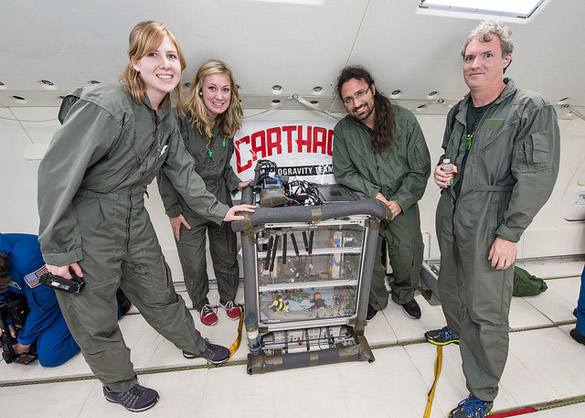Microgravity Propellant Gauging Using Modal Analysis: Phase II
PI: Kevin Crosby, Carthage College, Rudy Werlink (Co-I), NASA/Kennedy Space Center
PI: Kevin Crosby, Carthage College, Rudy Werlink (Co-I), NASA/Kennedy Space Center

- TA01 Launch Propulsion Systems
- TA02 In-Space Propulsion Technologies
The experimental modal analysis (EMA) technique is an inexpensive, non-invasive and computationally robust method of assessing propellant mass through its effect on structural resonance modes in the propellant tank. EMA is a computational technique that extracts the resonant modes of the structure from real-time vibrational data obtained from sensors affixed to the structure. The natural resonances of a structure depend on the stiffness and the effective mass of the structure, and so the EMA technique can be used to determine the effective mass of the propellant tank. The effective mass of the tank is, in turn, dependent on the mass loading of the structure by its liquid contents. EMA uses the shifts in resonant frequencies of the tank as liquid level changes to calculate the change in effective mass of the tank and thereby the change in liquid mass.
This work is a continuation of previous flight testing under T0123 and T0147.
Technology Details
-
Selection DateREDDI-F1-16 (Jul 2016)
-
Program StatusCompleted
- 2 Parabolic
Development Team
-
PIKevin Crosby
-
PI Organization
-
Co-IRudy Werlink
-
Co-I Organization
-
SponsorCarthage College
-
PartnersNASA/KSC

